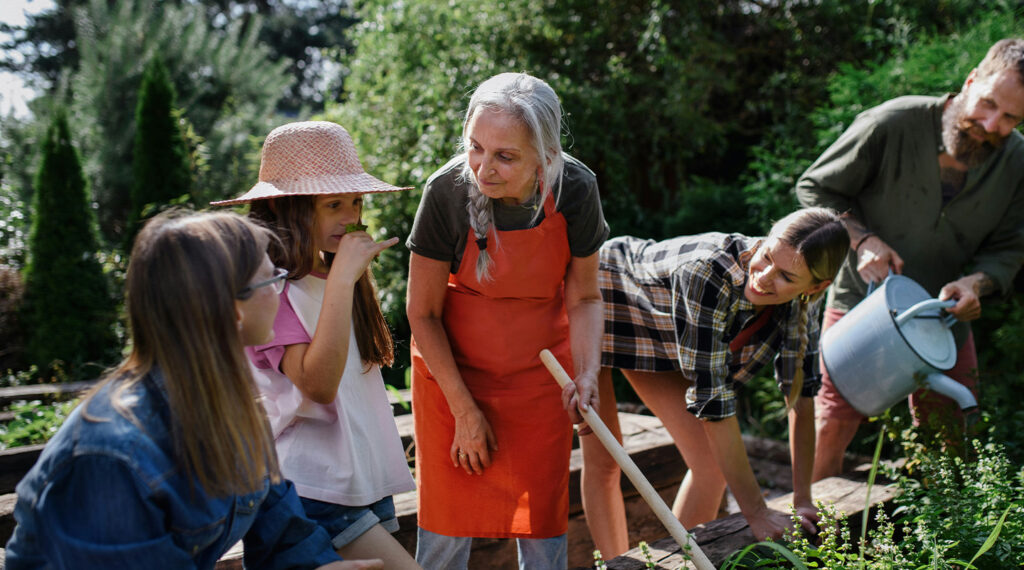Wilde Ganzen’s journey with participatory grantmaking

In late 2021, Wilde Ganzen began exploring methodologies to enhance community participation with minimal interference from the organisation. Participatory Grantmaking (PGM) emerged as a promising approach – not only to increase community participation but also to potentially reshape how we operate as an organisation in the future.
We envisioned that by moving toward a 100% community-led approach, we could gain deeper insights into building trust, fostering true community ownership, and creating long-term societal impact. In December 2022, we piloted PGM in four countries[1], working with five diverse partners. The challenge was to co-create a model that didn’t create a parallel system but instead aligned with existing structures. At the same time, we had to stay mindful of our role in this process.
Our goal was no longer to be in the driver’s seat. Instead, we stepped back to learn -from the partners implementing the model, the communities experiencing it, and the feedback we received. This was not just about the mechanics of implementation but about how PGM could transform our organisational mindset, challenge our own biases, and redefine what true community participation and shifting power really mean. Most importantly, we wanted the changes to be led by the communities themselves, free from unintended external influence.
Reshaping power dynamics
For Wilde Ganzen, adopting PGM was part of a vision to reshape the traditional power dynamics that often dominate philanthropy. We aimed to co-create a model where decision-making power was fully transferred to communities and local organisations, fostering transparency and mutual trust. This was evident in our pilot, where partners and community members were leading in every aspect—from customising a suitable PGM model to identifying community needs, forming advisory committees, reviewing proposals, selecting projects, and even financing, monitoring, and evaluating the outcomes alongside the communities.
As one of our partners in Ethiopia reflected, “When you pilot a project like this, the process is as equally fascinating as the impact. You need to be open-minded because there’s a lot to learn.” This mindset of openness and flexibility was key to the success of the pilot, allowing us to adapt and learn with our trusted local partners embedded in the communities.
Importantly, this journey also taught us an organisational lesson: the necessity of embracing risks. Without taking risks, we realised we wouldn’t be able to fully shift the power and challenge existing top-down funding models. Another critical takeaway was trusting the expertise of local partners and communities. This trust reduced risks and enabled smoother implementation, leveraging local knowledge to achieve more relevant and impactful results.
Internal challenges and organisational shifts
Getting internal buy-in for PGM was also a major challenge. Introducing a new funding model, where traditional fund management practices didn’t apply, sparked extensive internal discussions. We had to rethink how we assessed risks, and how to make our processes more friendly and non-burdensome for our partners and their grantees. A key focus was ensuring that community capacity -or a perceived lack thereof – would never become an obstacle to securing funding.
These discussions helped us recognise that we needed to evolve as an organisation. We worked hard to streamline our processes so that partners and communities could engage without being overwhelmed by bureaucratic demands. This internal shift was just as transformative as the external impacts of PGM.
From empowerment to ownership
The PGM pilot didn’t just benefit us – it also empowered the grantees. We saw a shift in how grantees – whether Community Structures (CSs) or Advisory Committee (AC) members – moved from passive recipients of funds to active participants in decision-making. This strengthened their sense of agency and capacity.
Several grantees mentioned how the PGM process was different from traditional grantmaking. One AC member noted, “This process is different because we are being consulted and asked what we think – so we feel our opinions matter.” For many, it was the first time they felt truly heard, not just voicing their needs but also helping shape the solutions.
CSs also gained practical skills, due to sessions on proposal writing, project management and financial reporting. As one grantee shared, “We learned a lot from this experience, especially in needs assessment, proposal writing, and project implementation.”
By integrating grantees into the decision-making process, fostering long-term capacity and self-reliance can be made possible, making communities more resilient to future challenges.
The transformative power of PGM
At its core, Wilde Ganzen’s flexible PGM model aims to decentralise decision-making, ensuring those closest to the issues are also the ones deciding on the solutions. We hope this will create broader societal value by fostering civic engagement and enhancing social cohesion.
In Egypt, a women-only PGM model was implemented to navigate local cultural norms that limited women’s participation. As one partner shared, “For the community of women, they have learned that their voice is not just a voice – it can be put into action and create a result.” This approach not only distributed grants but also fostered a sense of empowerment and agency in women previously excluded from decision-making processes.
In addition, PGM strengthened existing community structures, building on local deliberation mechanisms. Communities already involved in decision-making processes found PGM a natural extension of their practices. As one partner explained, “Community issues, community solutions – this is at the heart of a bottom-up approach.”
What we take forward
Implementing PGM brought challenges, from logistical issues to navigating power dynamics and resistance to change. As one partner noted, “It took us a while to take off and start the project.” In some cases, local authorities hesitated to engage when they weren’t the primary decision-makers, emphasising the need for clear communication and trust from the outset.
Our experience with PGM has shown how it shifts power to communities, fostering sustainable, inclusive, community-led development. We are committed to scaling up our efforts and urge others to embrace PGM, adding value to their organisations and promoting a more just society.
[1] WG pilot was implemented in 4 different countries (Ethiopia, Egypt, Turkey, and Tanzania) with pivotal participation of the following partners: Partners in Education – Ethiopia, My Home-land – Turkey , Women of Siwa – Egypt , FCS – Tanzania, The Well in Action – Ethiopia.
This article is part of a series marking the one year anniversary of the international edition of ‘Philanthropy Back the Drawing Board‘. Guest curated by the book’s author, Rien van Gendt, the series shares insights on the prevailing topics and trends in the philanthropy sector:
- “Philanthropy Back to the Drawing Board”: One year on – Rien van Gendt, Van Gendt Philanthropy Services
- Plurality in philanthropy: balancing long-term impact and urgent needs – Carol Mack, Association of Charitable Foundations
- Beyond trust: How philanthropy should move towards more flexible funding to maximise impact – Bathylle Missika, OECD
- Wilde Ganzen’s journey with participatory grantmaking – Reham Basheer, Wilde Ganzen
- Beyond funding: Exploring participatory practices in the Gulbenkian Foundation’s management of the Active Citizens Fund – Pedro Calado, Fundação Calouste Gulbenkian
- Reflections on global philanthropy for greater impact: A value-based holistic approach rooted in experience – Runa Khan, Friendship
Authors

